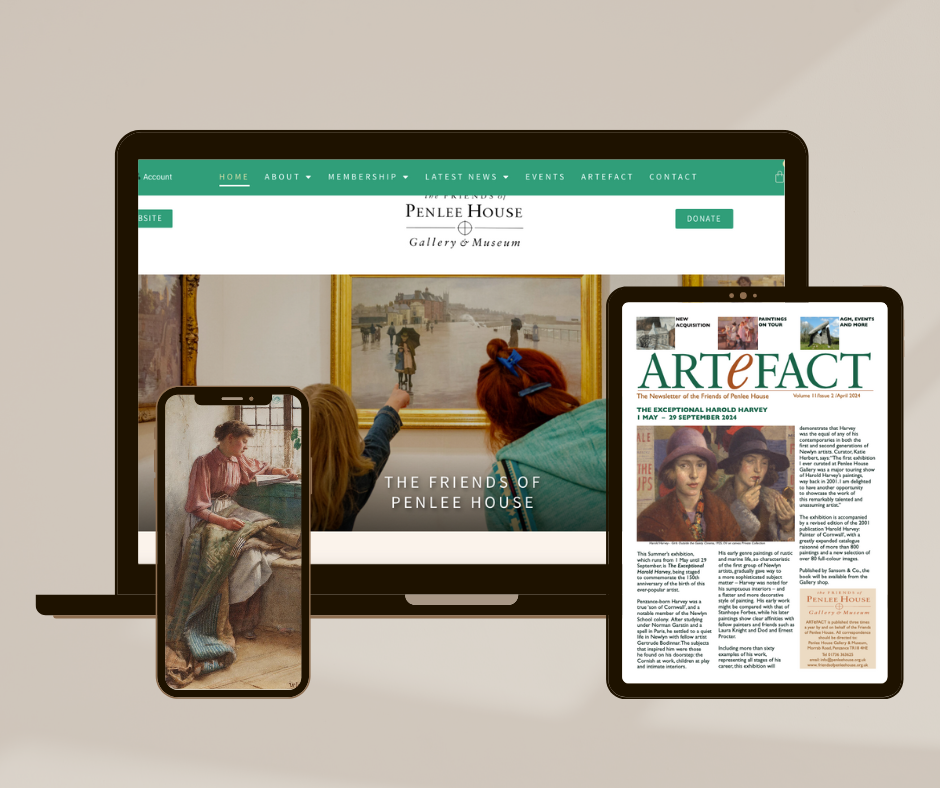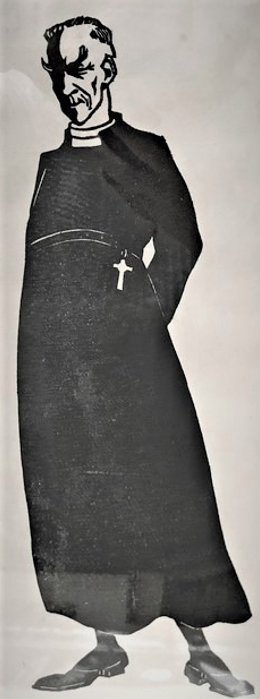
Home » Latest News » Hilda Quick by Ron Clegg
The image is of Thomas Maddrell, sometime Canon of Truro Cathedral and vicar at Gulval for twenty years until his death in 1932 This wood-block print, by the artist, musician, author and noted ornithologist, Hilda Margaret Quick (1895-1978) is part of a recent donation to Penlee and a fine example of her work.
An only child, Penzance-born Hilda was educated locally at Church of England schools, with her fellow pupil Norman Garstin’s daughter Alethea. Hilda’s early academic achievements did not point to her later success as an artist. Her school prizes tended to be in recognition of her ability as a violinist which, In 1910, saw her gain a Higher Division distinction with a Royal Academy of Music examining board. It seems her early passion was for the musical score rather than the artist’s pallet.
In 1911 her father’s work took the family to Falmouth where they remained during the First World War with Hilda playing at concerts to raise money for the Red Cross. Following the armistice, the family returned to Penzance where in 1920 Hilda joined the Penzance Orchestral Society as a first violinist, often under their Principal Violinist Lilian Garstin. She remained with this orchestra for some twenty- seven years, whilst also taking part in performances of the Cornwall Symphony Orchestra. In 1921 Hilda was enrolled with the then London Central School of Arts and Crafts where she specialised in wood engraving under her tutor Noel Rooke a noted pioneer in this medium A short time in Paris was followed by further tuition, this time from a source close to home, the veteran Newlyn artist Norman Garstin who, for many years organised and taught at summer painting schools in both England and France. At a number of these schools during the 1920s Hilda gained valuable additional tuition and material for future exhibitions.
Unsurprisingly, Hilda’s twin passions for art and music eventually found common ground in the support she gave to the emerging Minack Theatre. In 1932 her work in producing a programme and costume designs for an early production of The Tempest formed a sound foundation for further collaborations over the years between Hilda and the theatre founder, Rowena Cade.
The 1930s seem to have been the time for new challenges for Hilda. when she also embarked on what would absorb her for life: ornithology. In 1934 she joined the newly formed Cornwall Birdwatching and Preservation Society, shortly becoming joint editor of ‘County Report’, the organisation’s journal at the time.
In the years leading up to World War II, she continued with contributions to theatre productions, book illustrations, art exhibitions and orchestral work. Increasingly committed to ornithology she travelled throughout Cornwall cataloguing species and recording them on her woodblock prints. With the outbreak of the Second World War Hilda joined the Women’s Voluntary Services. She was seconded to Penzance Borough Council where her work in the ‘Billeting Office’ (for evacuees) resulted in the production of some of her more amusing post-war sketches and prints. The years after the war also saw, in 1948, the publication of her first book which she also illustrated “Marsh and Shore Bird Watching in Cornwall”.
The death of her bank manager’s father in 1947, followed in 1951 by the death of her mother, seems to have led Hilda to re-evaluate the future direction of life. Her solution was to permanently move from Penzance to St Mary’s in the Scilly Isles. Over the years her regular bird-watching trips had drawn her close to the Isles and its peoples. Her move seemed a natural progression: it also meant she could focus on gathering material for a second book which she also illustrated. It was published in l964 with the title ‘Birds of the Scilly Isles” and carries an interesting dedication ‘To Bryher who loves Scilly’. The Bryher here was Annie Winifred Ellerman a noted feminist and writer whose love of the Scilly’s led her to adopt the name of one of the islands.
Hilda died in 1978 at Pringle’s Cottage on St Mary’s and is buried in the local churchyard. In 1980 an exhibition of her work curated by the Newlyn Art Gallery toured Cornwall, including the Isles of Scilly.
Some of Hilda’s work is archived at the Morrab Library, Penzance and the Minack Theatre, Porthcurnow. An online source is easily accessible through the search facility at University of the Arts London

The Friends of Penlee House is a registered charity (No: 1001644), the object of which is to support the aims and activities of Penlee House Gallery and Museum, home to the county’s best known collection of work by artists of the Newlyn School.